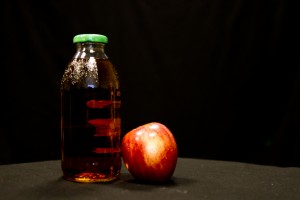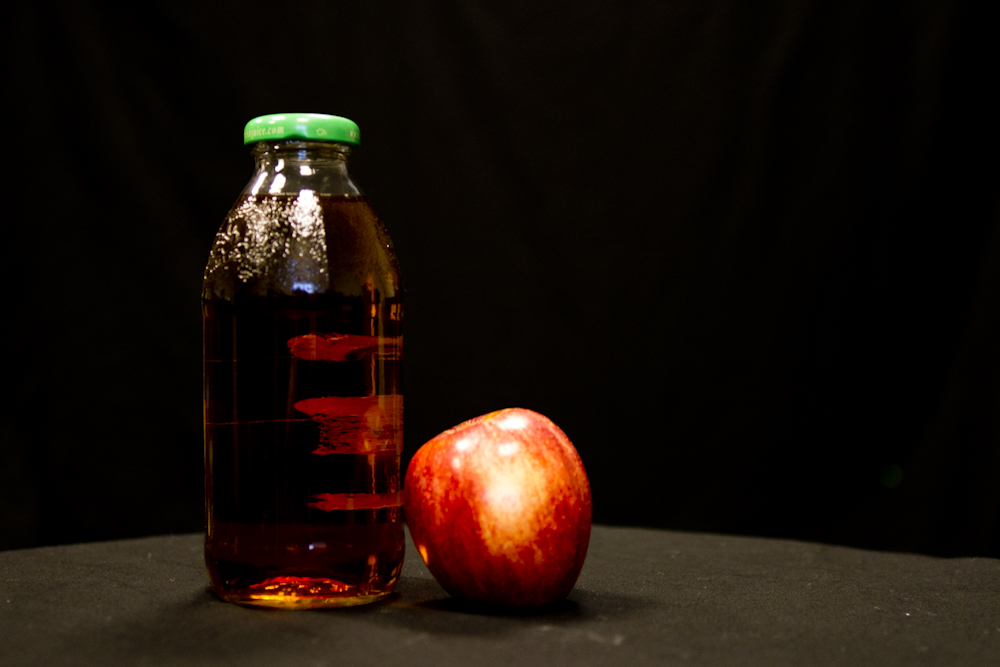 When Consumer Reports publisher Consumers Union announced its findings related to an investigation of arsenic levels in several popular fruit juices last month, the uproar was instantaneous.
When Consumer Reports publisher Consumers Union announced its findings related to an investigation of arsenic levels in several popular fruit juices last month, the uproar was instantaneous.
Released just two months after an episode of “The Dr. Oz Show” brought the issue to the public forefront, the Consumer Reports investigation aroused a nationwide debate, raising questions about the safety of juice products as well as Food and Drug Administration standards.
What remains mostly unpublicized, however, is that several groups contacted the FDA about elevated arsenic and lead levels in fruit juices earlier this summer – a full two months before “The Dr. Oz Show” episode about arsenic levels in apple juices originally aired.
“Right now, there are no standards for juices for arsenic at all, or even heavy metals,” said Judy Braiman, founder of the Empire State Consumer Project, an advocacy group established in 1986. Braiman’s organization conducted an independent study analyzing heavy metals levels, including arsenic and lead, in several juice products in July, which found arsenic levels higher than the FDA’s established standards for drinking water in several apple juices and sauces.
“We did a screening and we went out and purchased different juice products,” Braiman said. Juices tested included, Very Fine Apple Juice, Wegmans, Ruby Kist and Apple & Eve. The initially tested product, Mott’s Apple Juice, was found to contain arsenic levels at 55 parts per billion.
Although the Food and Drug Administration has said that “organic forms of arsenic are essentially harmless,” the organization still issues a “level of concern” for bottled water with total arsenic levels at or above five parts per billion.
The Environmental Protection Agency distinguishes inorganic arsenic from the organic variety when the semi-metallic element is combined with other, non-carbon elements. The EPA identifies inorganic arsenic as a carcinogen, stating that ingestion and inhalation of products containing inorganic arsenic may lead to liver, bladder and skin cancers.
In a 2008 hazard assessment report, the FDA declared that consumption of apple juice products containing inorganic arsenic levels in quantities of more than 23 parts per billion represented “a potential health risk” to consumers.
On July 21, Braiman and Food & Water Watch Executive Director Wenonah Hauter issued a letter to FDA Commissioner Margaret Hamburg detailing the findings of the Empire State Consumer Project report.
Braiman did not receive the response until late November, two months after “The Dr. Oz Show” broadcast and four months after she informed the FDA of the research findings.
“After we went public, ‘The Dr. Oz Show’ dedicated an entire program to the arsenic in juices,” Braiman stated. She claimed that the FDA criticized both her organization’s research findings and the results of the independent testing performed for “The Dr. Oz Show” because “they claimed the only arsenic that’s dangerous is the inorganic.”
Braiman said that her organization met with FDA representatives in October to discuss their research findings.
She said that while several other studies, including reports conducted by The University of Arizona and The St. Petersburg Times, uncovered similar findings regarding elevated arsenic levels in fruit juices, the Food and Drug Administration continued to refute the Empire State Consumer Project’s claims.
“When we had our meeting with them on Oct. 14, they found inorganic arsenic in juices that they tested,” Braiman said. “They had to go public, because somebody leaked the letter they sent to us, and ABC News did a story on it, and they did have to admit they did find inorganic arsenic in the juices they tested.”
Last month’s widely-cited Consumer Reports investigation led to the FDA publicly acknowledging, and subsequently readdressing, its stance on arsenic levels in fruit juices. The independent testing analyzed more than 80 apple and grape juices, with more than a quarter of the sampled juices exceeding the FDA’s 5 parts per billion lead limit for bottled water, and10 percent of the sampled juices exceeding the organization’s 10 parts per billion limit for total arsenic in drinking water.
Although the report found that most of the arsenic detected in the sampled juices was of the inorganic variety, representatives from the companies, including Apple & Eve, have defended their products against the Consumer Reports findings.
"All test results conducted by both Consumer Reports and by our own regularly-conducted testing of our raw materials and finished goods, by independent outside labs, show that Apple & Eve apple juice products fall significantly below the arsenic and lead guidance levels established by the FDA for juice," stated Apple & Eve spokeswoman Rebecca Ambers in an e-mail response, according to the International Business Times.
“The FDA could not really question the testing methodology that Consumer Reports used,” said Tony Corbo, a senior lobbyist for the organization Food & Water Watch. “It really brought to the forefront that a standard needs to be established by the FDA for these heavy metals in juices.”
Both Corbo and Braiman believe that elevated arsenic levels in fruit juices may lead to long-term health concerns for consumers.
“I think there is a risk,” Corbo said. “One of the things that is a little deceptive with pesticides and heavy metals in food is that if they’re extremely high levels, yes, you’re going to get sick right away, but with foods with lower levels, they can accumulate in body organs and the health effects will exhibit themselves years later.”
While he said that he does not consider the arsenic levels to be “an immediate public health risk” comparable to e-coli or salmonella-tainted products, he does consider the levels to be a cause for concern for consumers, due to the potentiality of longstanding health consequences.
“I’m not a scientist, but I can tell you this,” Braiman said. “I do know that it accumulates in the body, and of course, children would be much more susceptible to this.”
Corbo said that the elevated arsenic levels can most likely be attributed to an increased reliance on juice concentrate imports.
“That’s the other thing that’s going on here,” he said. “We’re importing 70 percent of our apple juice concentrate from China, and they are still using arsenic-based insecticides in their apple production”
As a result, Corbo said that the FDA should increase its “vigilance over the imported products” that arrive on American store shelves, as well as implement stricter guidelines pertaining to accepted heavy metals levels in juice products.
“We want the FDA to at least initially set a lower standard than what they have now,” Corbo continued.
“Right now, they have something called a level of concern of 23 parts per billion for arsenic, for example. We think that should be lowered to at least the level that the EPA has set for arsenic levels in drinking water.”
Corbo said he wants the Food and Drug Administration to establish a 10 parts per billion “benchmark” as the organization’s level of concern for the amount of arsenic in fruit juices.
“They should then do further research on their own looking at the long-term health effects and as Consumers Union has recommended, that the standard for arsenic be dropped down to three parts per billion,” he said.
“And then, do an actual, formal standard setting, a clear standard that can be applied to both domestic and imported juices.”
Earlier this month, FDA Deputy Commissioner Michael R. Taylor announced the organization will be taking several steps to reduce arsenic levels in juice products, including more testing of juice concentrates, additional monitoring of juice imports from China and coordinating risk analysis reviews with the EPA.
“We want to minimize the public’s exposure to arsenic in foods as much as we can,” Taylor was quoted in a FDA press release earlier this month.
“For that reason, FDA plans to consider all the relevant evidence and, based on this work, FDA may set a guidance or other maximum level to further reduce arsenic in apple juice and juice products.”
